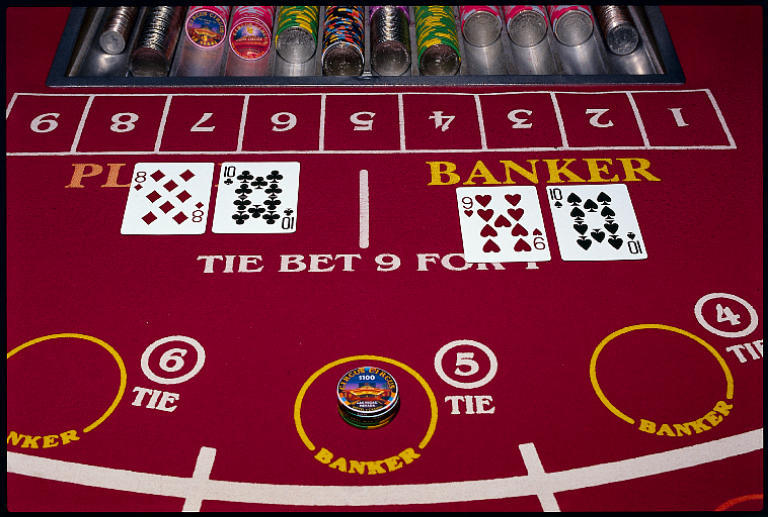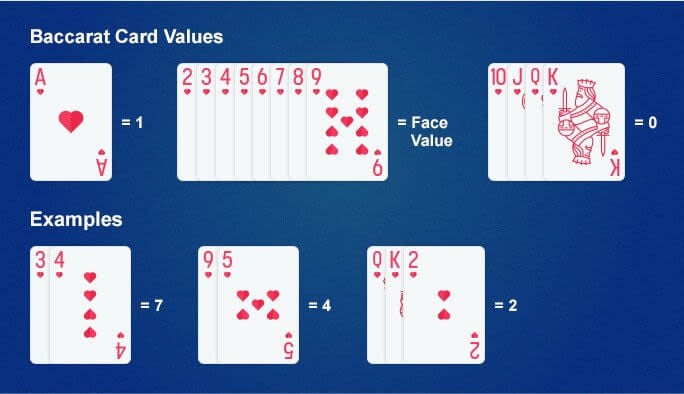Mini Baccarat Guide: Rules, Strategies, and Winning Tips

Introduction to Mini Baccarat
Mini Baccarat is a streamlined version of the classic baccarat game, designed to be faster and more accessible to newcomers and casual players. This popular casino game keeps the core goal intact: predict which hand—Player or Banker—will achieve a total closest to nine, or whether the result will be a Tie. With its smaller tables, lower minimum bets, and speedy gameplay, Mini Baccarat is a great entry point for those looking to experience one of the most exciting table games in both land-based and online casinos.
Essential Rules: Playing and Winning at Mini Baccarat
When you play Mini Baccarat, your main objective is simple—place your wager on the Player, Banker, or Tie outcome. The hand with the highest total, up to a maximum of nine, wins the round. Whether betting on yourself or the banker, the result is determined by the total value of the cards dealt to each hand.
Key points about Mini Baccarat gameplay:
– Each round begins with two cards dealt to both the Player and Banker sides.
– Hands are compared after all required cards are drawn.
– The best possible hand totals nine; the worst is zero.
– If both hands are equal, the round is declared a Tie.
Understanding Card Values in Mini Baccarat

The card values in Mini Baccarat determine the outcome of each game. Here’s how each card is counted:
– Ace = 1 point
– Cards 2–9 = face value
– 10, Jack, Queen, King = 0 points
To calculate a hand’s total, simply add up the value of the cards. If the total exceeds nine, only the last digit counts (for example, a total of 14 becomes 4). Tens and face cards are always counted as zero.
A hand totaling zero is the lowest possible and loses unless the opposing hand also has zero, which then results in a Tie.
Mini Baccarat Hand Calculation Examples
Let’s walk through some example hands to clarify scoring in Mini Baccarat:
Example 1:
– Player’s cards: 7 + 4 = 1 (since 11, only last digit, is 1)
– Banker’s cards: Jack + 5 = 5 (picture cards = 0)
– Player draws 7 for a total of 8; Banker draws 5 for a total of 0
– Player wins with 8 points.
Example 2:
– Player: 9 + 7 = 6
– Banker: 6 + Ace = 7
– No additional cards; Banker wins with 7.
Example 3:
– Player: Ace + 9 = 0
– Banker: Ace + 7 = 8
– Banker wins with 8.
Example 4:
– Player: 8 + 9 = 7
– Banker: 8 + 2 = 0, draws King (still 0)
– Player wins with 7.
Example 5:
– Player: 3 + 2 = 5, draws 6 for a total of 1
– Banker: 9 + 4 = 3, draws 9 for a total of 2
– Banker wins with 2.
The key principle: when a hand totals more than nine, ignore the first digit (13 becomes 3, 17 becomes 7, etc.). Picture cards and tens always contribute zero.
How Mini Baccarat Outcomes Are Determined
In every round, both Player and Banker hands are dealt two cards each. The side that achieves a score of nine, or gets closest to it, is the winner. Should both hands end up with the same value (from zero to nine), the result is a Tie.
Zero-value outcomes (when two cards add to 10, 20, or 30) are possible through these card pairings:
– 5 + 5
– 6 + 4
– 7 + 3
– 8 + 2
– 9 + 1
If both hands result in zero after the initial draw, an additional card is drawn for each, unless both cards are a 10 or face card, in which case the result is a Tie.
Third Card Rules in Mini Baccarat
After the first two cards, the dealer may draw an additional card for one or both hands, depending on their total value. The complicated drawing rules are handled by the dealer, so players simply place bets and watch the outcome unfold.
– A “natural” win (total of 8 or 9) with the first two cards means no further cards are drawn.
– Otherwise, the dealer consults a preset chart to decide if a third card is needed for Player or Banker.
What Happens After a Tie in Mini Baccarat?
When a Tie occurs, the treatment of wagers varies:
– In online games, bets on Banker or Player are typically returned to the player as a “push”.
– In physical casinos, players have several options:
– Leave their chips where they are for the next round.
– Switch bets to the other side or bet on a Tie.
– Remove their chips and sit out for a round.
Some casinos have special rules about Tie betting, so it’s wise to check house policies before playing.
Strategies for Mini Baccarat
Although the house edge is set—1.06% for the Banker and 1.24% for the Player (using eight decks)—utilizing smart betting tactics and money management can optimize your playing experience.
Tips for strategic play:
– Banker bets offer slightly better odds over time, but every Banker win comes with a 5% commission, which can add up.
– The probability of Banker winning is about 45.9%, compared to 44.6% for Player (with eight decks).
– Don’t blindly follow advice to always bet on Banker; shuffle patterns and luck can shift outcome streaks.
Successful Mini Baccarat players focus on:
– Carefully managing their bankroll.
– Avoiding the Tie bet, which carries a significant house edge (over 14%).
– Observing trends but not relying on them as a guarantee.
Mini Baccarat vs. Traditional Baccarat: Key Differences
Mini Baccarat offers a different experience from traditional baccarat games. Let’s break down the major contrasts:
– Table Size: Traditional tables seat up to 14, while Mini Baccarat usually hosts 6-7.
– Pace of Play: Mini Baccarat games move quickly, making them ideal for those who enjoy more hands per hour.
– Betting Requirements: Entry bets are lower, making the game accessible for beginners and casual gamblers.
– Card Handling: In classic baccarat, the role of dealer rotates among players; in Mini Baccarat, the casino dealer handles all cards.
For anyone seeking a relaxed, low-pressure baccarat experience with even-money payouts and quick rounds, Mini Baccarat is an optimal choice.
A Brief History of Baccarat and the Rise of Mini Baccarat
To understand why Mini Baccarat has become so widespread, it helps to trace the game’s origins. The main branches of baccarat are:
– Baccarat en Banque: The earliest form, involving exclusive tables and rigid procedures.
– Baccarat Chemin de Fer: A later adaptation prioritizing social play and shared responsibilities.
Historically, baccarat was reserved for high society, featuring elaborate rituals on who could play, when bets could be placed, and how cards were drawn.
The Evolution of Baccarat Variations
Modern baccarat owes much to “Punto Banco,” a player-versus-banker adaptation developed in Argentina during the 1950s and popularized in Cuba, then the United States. The evolution led to the creation of several new variants:
– Big Baccarat
– Midi Baccarat
– Mini Baccarat
Today, Mini Baccarat is among the most popular forms due to its straightforward betting process and speed. Instead of rigid procedures and exclusive rooms, the modern Mini Baccarat table welcomes seven players, with casino staff handling all deals and rules.
Online and brick-and-mortar casinos predominantly feature these simplified baccarat styles, which appeal to a broad range of players. Nonetheless, some high-limit rooms still offer classic baccarat for those seeking tradition.
Conclusion: Why Play Mini Baccarat?
Mini Baccarat stands out for its user-friendly rules, swift action, and inclusive atmosphere. Whether you’re new to casino gaming or an experienced player after a fast-paced table game, Mini Baccarat delivers excitement and opportunities to win—no deep pockets required. With an understanding of its scoring, betting options, and strategic nuances, you’ll be well-placed to enjoy this enduring favorite whenever you visit the casino floor or play online.









